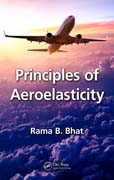
Introductory Guide on the Design of Aerospace Structures Developed from a course taught at Concordia University for more than 20 years, Principles of Aeroelasticity utilizes the author’s extensive teaching experience to immerse undergraduate and first-year graduate students into this very specialized subject. Ideal for coursework or self-study, this detailed examination introduces the concepts of aeroelasticity, describes how aircraft lift structures behave when subjected to aerodynamic loads, and finds its application in aerospace, civil, and mechanical engineering. The book begins with a discussion on static behavior, and moves on to static instability and divergence, dynamic behavior leading up to flutter, and fluid structure interaction problems. It covers classical approaches based on low-order aerodynamic models and provides a rationale for adopting certain aeroelastic models. The author describes the formulation of discrete models as well as continuous structural models. He also provides approximate methods for solving divergence, flutter, response and stability of structures, and addresses non-aeroelastic problems in other areas that are similar to aeroelastic problems. Topics covered include: The fundamentals of vibration theory Vibration of single degree of freedom and two degrees of freedom systems Elasticity in the form of an idealized spring element Repetitive motion Flutter phenomenon Classical methods, Rayleigh-Ritz techniques, Galerkin’s technique, influential coefficient methods, and finite element methods Unsteady aerodynamics, and more
- ISBN: 9781498724722
- Editorial: CRC PRESS LLC
- Encuadernacion: Tela
- Páginas: 173
- Fecha Publicación: 14/04/2016
- Nº Volúmenes: 1
- Idioma:
